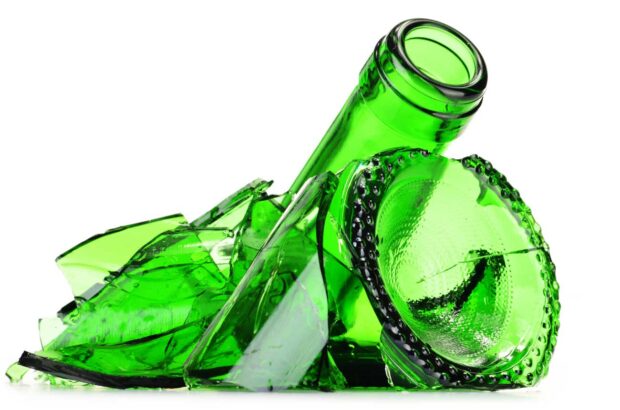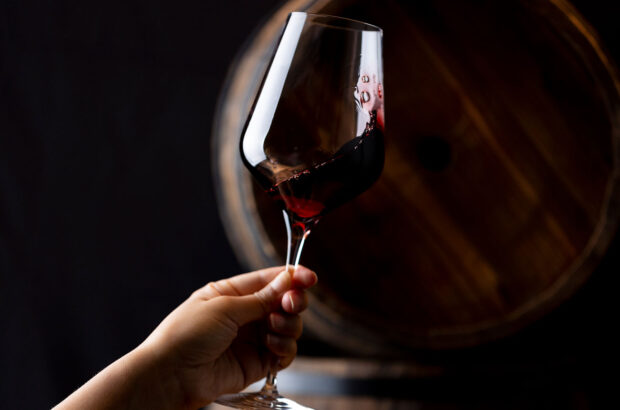Having launched a legend, Sassicaia founder Nicolò Incisa della Rochetta is retreating to the background as his stepson, Dottore Sebastiano Rosa, comes to the fore. By JOHN STIMPFIG.
When the first tiny vintage of his family’s Tuscan estate wine – made from Cabernet Sauvignon and Cabernet Franc grapes – was sold in 1969, the Marchese Nicolò Incisa della Rochetta probably had little idea that he would be changing the course of Italian fine wine forever.
The wine was Sassicaia, the estate was San Guido, and the rest, as they say, is history. It not only became the original Supertuscan vino da tavola but also Italy’s most sought-after wine. In its wake came waves of copies, lookalikes and wannabes. And without Sassicaia, it’s true to say that there would have been no Tignanello, Ornellaia or Solaia.
Sassicaia kick-started the shake-up of Italy’s antediluvian wine laws. It also became the first ever Italian estate to have its own estate DOC in 1994. And, just for good measure, it effectively transformed Bolgheri into what many believe is the country’s most exciting and dynamic fine wine region, bar none.
Yet despite being surrounded by so much turbulent change, Sassicaia is a monument of permanence. Not least because it has steadfastly remained one exalted wine, with one consistent, claret-like style, thanks to the constant devotion of one man – Nicolò Incisa della Rochetta. For the best part of four decades, the vinous fame and fortunes of Sassicaia, Tenuta San Guido and Nicolò Incisa della Rochetta have been inextricably bound together as a magical trinity.
Now though, those ties appear to be loosening. In February, visitors to Decanter’s Great Tuscan Fine Wine Encounter could not help but notice the absence of Nicolò Incisa della Rochetta from behind the Tenuta San Guido stand. Nor could they miss the presence of its tall and hirsute winemaker, Dottore Sebastiano Rosa.
Aged just 38, Rosa has been busily taking San Guido into pastures new since his arrival in 2000. First came a new cantina in Bolgheri which Rosa converted from an old olive oil press house. Then came two new IGT estate wines christened Guidalberto and Le Difese. For the first time in 40 years, Sassicaia had two new siblings.
Given the hitherto rather cautious and conservative nature of the Marchese, many may have assumed these were the brainchild of the new young turk. ‘In fact, Guidalberto was my idea,’ says Nicolò Incisa della Rochetta. ‘And between us, Sebastiano and I came up with the idea for Le Difese as Guidalberto’s second wine.’
Rosa not only confirms the story but modestly plays down his role in San Guido’s recent growth spurt. ‘The Marchese is still very much in charge. He is the one making the decisions. I am only carrying them out,’ he says. Nonetheless, it is clear that Rosa’s responsibilities extend beyond winemaking, into operations, commerce and even strategy. So is he being groomed for the top job one day? ‘I hope so,’ says Rosa. ‘I would love to take over at some point. But I’m confident that it won’t be any time soon.’
‘Of course, I would like Sebastiano to succeed me one day,’ adds Incisa. ‘But hopefully not for a long time yet.’
Father to Stepson
Why Sebastiano Rosa? One reason is that he happens to be Incisa’s stepson. Certainly, the two men enjoy a close relationship, which is why they talk so fondly and respectfully of each other. Rosa describes Incisa as ‘more than any father. For the best part of 40 years, he’s been a friend and mentor to me.’ In turn, Incisa is thrilled to have his dynamic stepson on board. ‘He’s a huge asset for us,’ he says proudly. ‘I couldn’t have done it without him.’
For the 68-year-old Incisa, Rosa’s arrival has enabled or possibly prompted him to capitalise on Sassicaia’s awesome reputation. ‘For many years, Sassicaia was the only wine we were producing – and it was unique,’ says Incisa. ‘But things have developed a lot in Bolgheri in the last few years. So when Sebastiano joined us it became possible to consider creating a new label. When some adjoining vineyards came up for sale with a similar terroir, it presented the perfect opportunity to expand.’
Rosa makes Sassicaia together with long-time consultant Giacomo Tachis. ‘But the two wineries are very separate,’ he explains. ‘Guidalberto is not a second label to Sassicaia. It is a completely different wine with different grape varieties at a lower price point. However, it does have the advantage of helping us maintain and improve Sassicaia’s quality. Primarily because we do put a small amount of Cabernet Sauvignon from some young Sassicaia vines into Guidalberto.’
https://www.decanter.com/features/founding-father-giacomo-tachis-248258/
The other varieties going into the two new wines are Merlot and Sangiovese, which again represents yet more departures for San Guido. Rosa is very excited by the quality of both varieties, but especially the Merlot, which makes up 45% of the blend, along with a similar amount of Cabernet.
‘The Bordeaux varieties do so well here, and the Merlot helps produce an earlier drinking wine,’ he says. And while Rosa is less enthusiastic about Sangiovese in Bolgheri, he has been delighted by tank samples from last year’s vintage. ‘It is rare to find Sangiovese from here which is so rich and fat,’ he says. ‘Tachis says he has never tasted anything like it.’
Although Incisa could be accused of nepotism in appointing Rosa to one of the plum positions in Italian wine, few would argue that his stepson hadn’t got the job on merit. Having lived and worked at San Guido as a youngster Rosa knows the estate as well as he knows the Marchese. More importantly, he is a talented, experienced and hands-on winemaker. It’s difficult to imagine a better-suited CV.
‘I studied agriculture and economics at Davis in California and followed it with a masters in oenology. Then I worked at Jordan and Stag’s Leap for a couple of years,’ he says. After that Rosa returned to Italy, but wisely resisted the temptation to join his stepfather. ‘I wanted to go back when the time was right.’ Meanwhile, at 26 he got the opportunity to work in Brunello when the Countess Cinzano offered him the job of winemaker at Argiano. ‘It was a great experience because I had complete control. I stayed for 12 years, during which time Tachis and I produced the first vintage of the Supertuscan, Solengo, in 1995.’
Beyond Bolgheri
During that time Rosa began to branch out into consultancy, although he’s now cut down on most of his extra-curricular oenological activities. Even so, there’s still a fidgety restlessness about him, which probably explains why, with Incisa’s support, he’s also been co-driving a joint venture project in Sardinia.
It’s a project between himself, San Guido, Tachis and Santadi, which owns Terre Brune. ‘Tachis has been consulting there for years, so we bought two estates in 2002 because we know what the region is capable of. He and I are making the wine, and I will be doing the marketing. In fact, we’ve just released our first vintage – a blend of Carignan, Cabernet and Merlot. It’s going to be a great wine,’ he enthuses.
https://www.decanter.com/features/founding-father-giacomo-tachis-248258/
As if this wasn’t enough, he and Incisa are also thinking about going into the hotel business. ‘Yes, we’re considering restoring an old, run-down podere on the famous avenue of cypress trees leading into Bolgheri,’ says the Marchese. ‘There’s no really nice place for people to stay in Bolgheri, so we’d make it into a small luxury hotel with about 12 rooms.’
Their modus operandi is informal. ‘Sebastiano just gets on with whatever needs to be done,’ says Incisa. ‘Because I have complete faith in him it gives me time to pursue other passions, including breeding racehorses.’
Of course, not everything has changed at San Guido. Sassicaia, for instance, still hasn’t really altered, except to steadily improve in volume and quality. Incisa jokes that Sassicaia was the original garage wine, producing just 7,000 bottles in 1968. Now it is up to around 180,000. Both resolutely agree that they want to keep its elegant and terroir-driven personality. ‘While some of our neighbours may be moving to a more ‘international’ style, Sassicaia’s essence will remain the same,’ says Rosa.
Website: www.sassicaia.com







